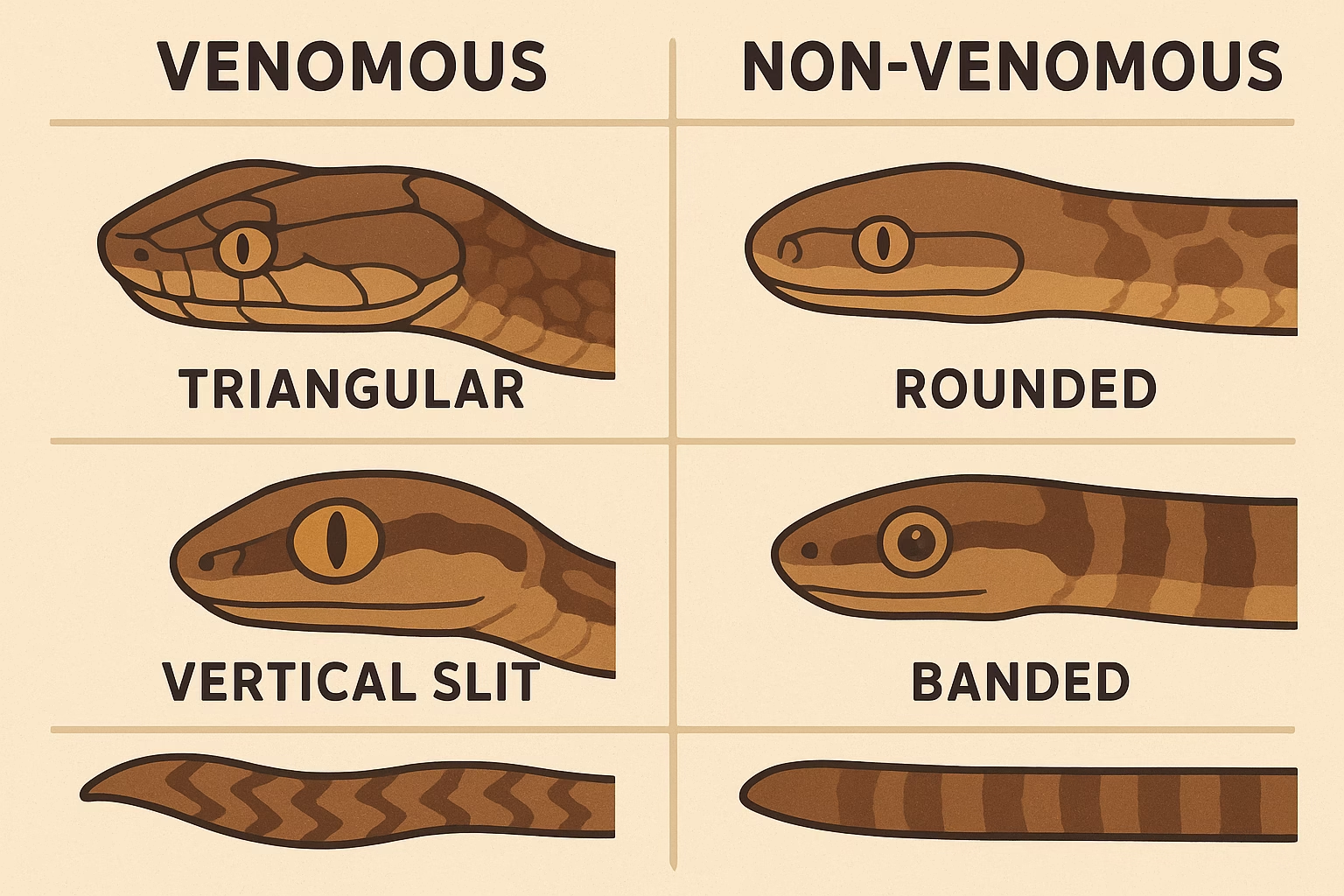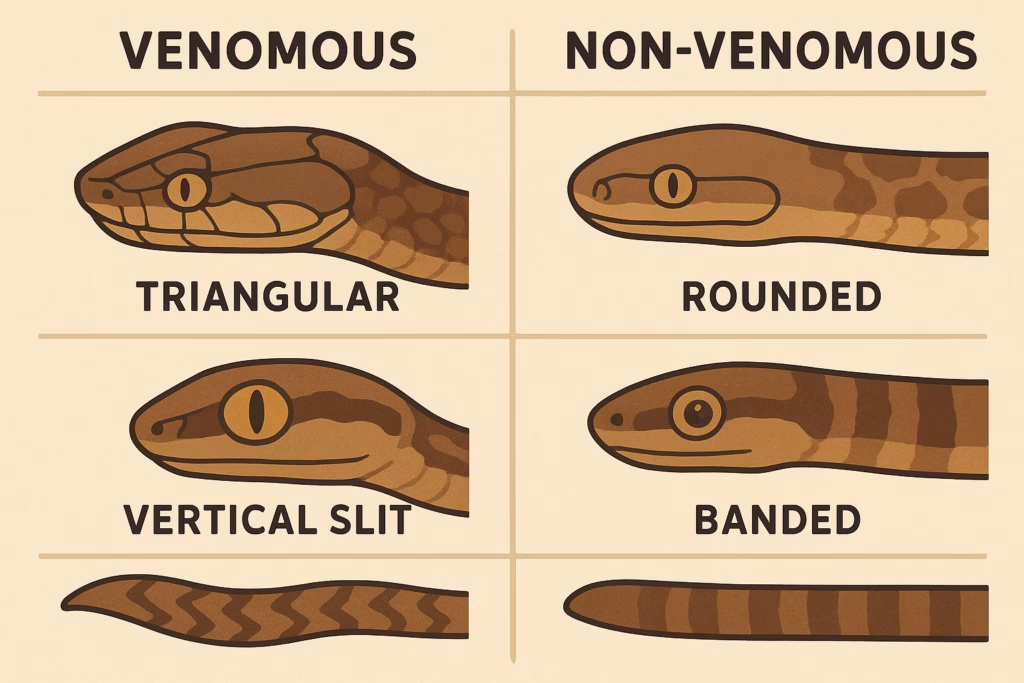🐍 How to Identify Venomous vs Non-Venomous Snakes
Snakes are fascinating creatures, but knowing how to identify venomous vs non-venomous snakes can literally be lifesaving — especially if you live in rural or forested areas.
In this article, we’ll explore how to tell the difference safely, signs to watch for, and how to stay calm if you ever encounter one.
🐍 Why Identification Matters
Not all snakes are dangerous — in fact, most are harmless and play an important role in controlling pests.
However, some species carry venom that can cause serious health issues or even death if untreated.
That’s why understanding the key differences helps you stay safe without harming these important reptiles.
🔍 Key Differences Between Venomous and Non-Venomous Snakes
| Feature | Venomous Snake | Non-Venomous Snake |
|---|---|---|
| Head Shape | Triangular or arrow-shaped | Rounded head |
| Eyes | Vertical slit-like pupils (like a cat) | Round pupils |
| Body Color | Often bright or patterned | Usually plain or dull |
| Tail | Short and thick | Long and slender |
| Bite Marks | Two deep fang marks | Row of small teeth marks |
| Behavior | Aggressive when threatened | Tries to escape or hide |
⚠️ Common Venomous Snakes in India
- Indian Cobra (Naja naja) – Has a hood mark resembling spectacles 👓
- Russell’s Viper (Daboia russelii) – Heavy body with chain-like brown spots
- Krait (Bungarus caeruleus) – Shiny black body with white bands
- Saw-Scaled Viper (Echis carinatus) – Small, with saw-like scales on its sides

🐍 Common Non-Venomous Snakes
- Rat Snake (Ptyas mucosa) – Long, slender, and fast; non-poisonous
- Indian Rock Python (Python molurus) – Heavy-bodied but harmless
- Common Trinket Snake (Coelognathus helena) – Small and often confused with cobra
- Checkered Keelback (Xenochrophis piscator) – Lives near water; non-venomous

🧠 Quick Visual Tips
.✅ Look at the head:
Triangular = likely venomous
Round = likely non-venomous
Watch pupil shape:
Vertical slit = venomous
Round = non-venomous
✅ Observe behavior:
Venomous snakes often hiss loudly and hold ground.
Non-venomous ones usually try to escape.
🚨 What to Do If You See a Snake
- Stay calm and don’t panic — sudden movement can trigger a defensive strike.
- Do not try to kill or handle it.
- Slowly back away and give it space to escape.
- Call local wildlife rescue or forest department for help if it enters your home.
🏥 If a Snake Bite Occurs
- Do not suck or cut the wound.
- Keep the victim still — movement spreads venom faster.
- Tie a loose band above the bite (not tight).
- Get medical help immediately.
- Note the snake’s color or take a photo (safely).
First aid steps for snake bite treatment read also How to Treat Snake Bite Before Hospital
💬 Conclusion
Knowing how to identify venomous vs non-venomous snakes helps protect both you and the snake.
Snakes are not naturally aggressive — they strike only when threatened.
So, if you ever see one, respect its space and act wisely.
Remember: Awareness saves lives.
❓ Frequently Asked Questions
Look for a triangular head, slit-like eyes, and prominent fangs or hood marks.
Mostly yes — hooded snakes like cobras are venomous, but some harmless snakes mimic them.
Yes, but their bites are usually harmless and cause only minor irritation
The Russell’s Viper and Indian Cobra are among the most dangerous snakes in India.
Stay calm, keep the affected limb still, and seek immediate medical help. Avoid traditional remedies.



I use an app called “Snake Snap.”